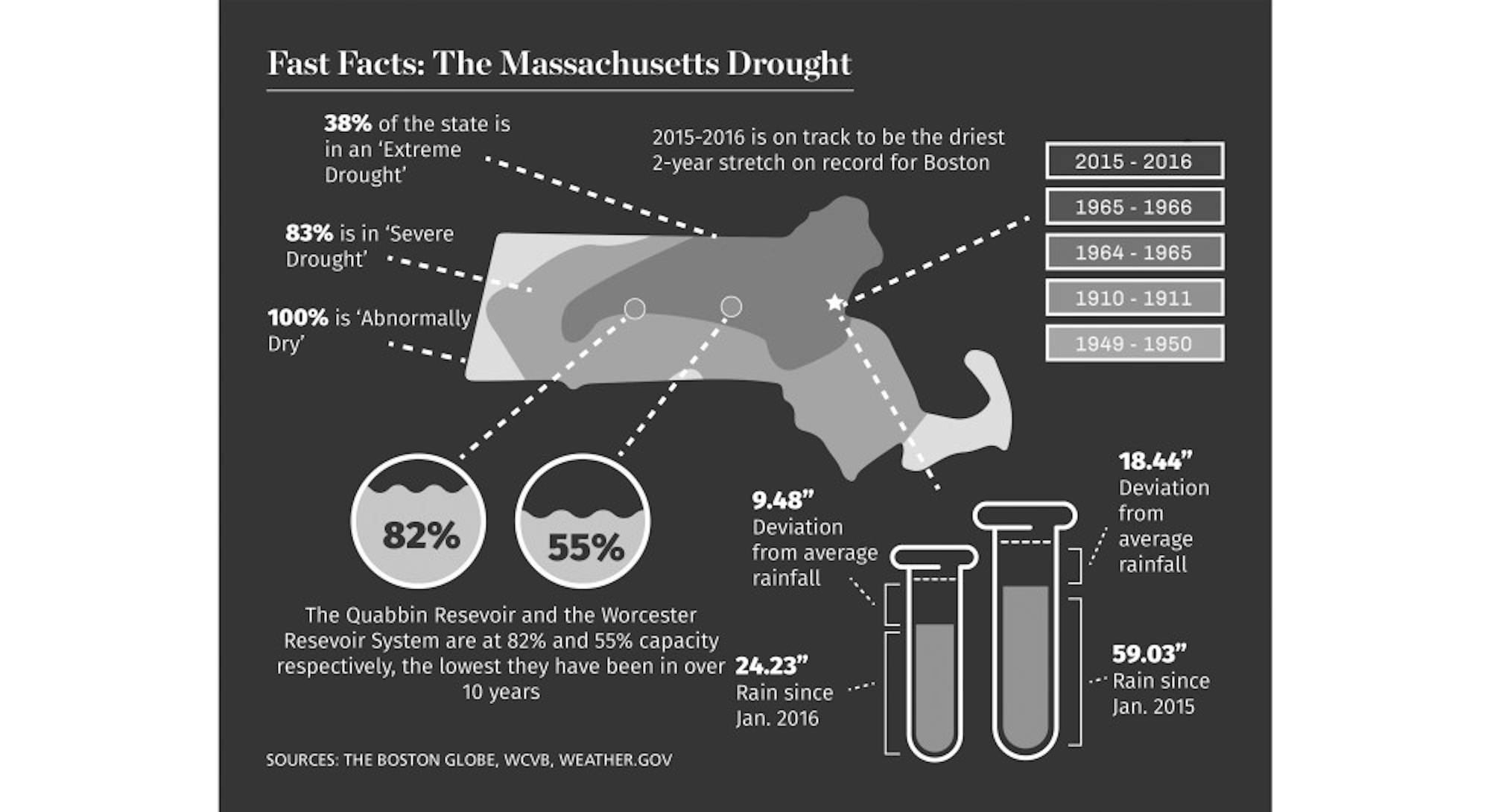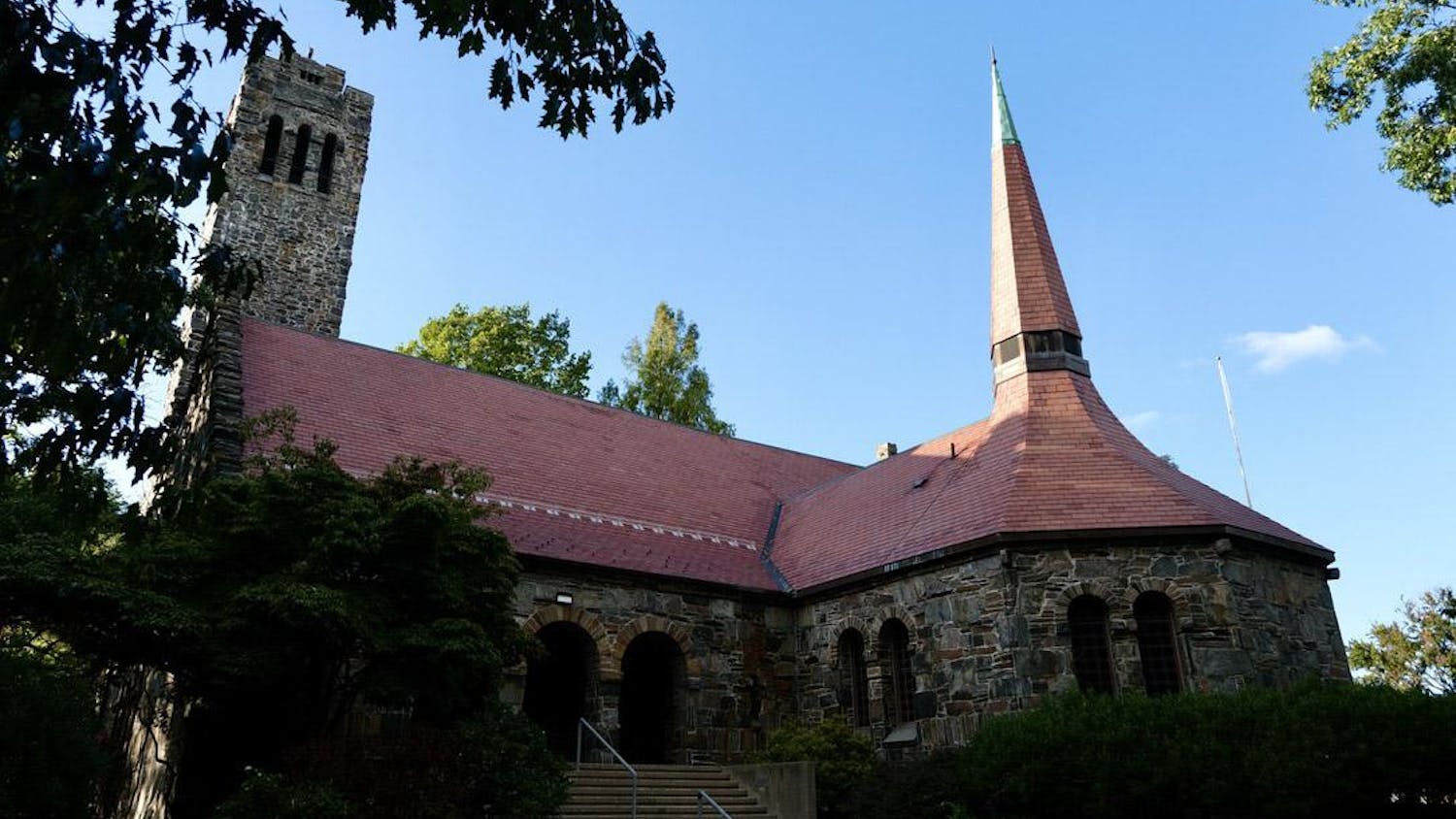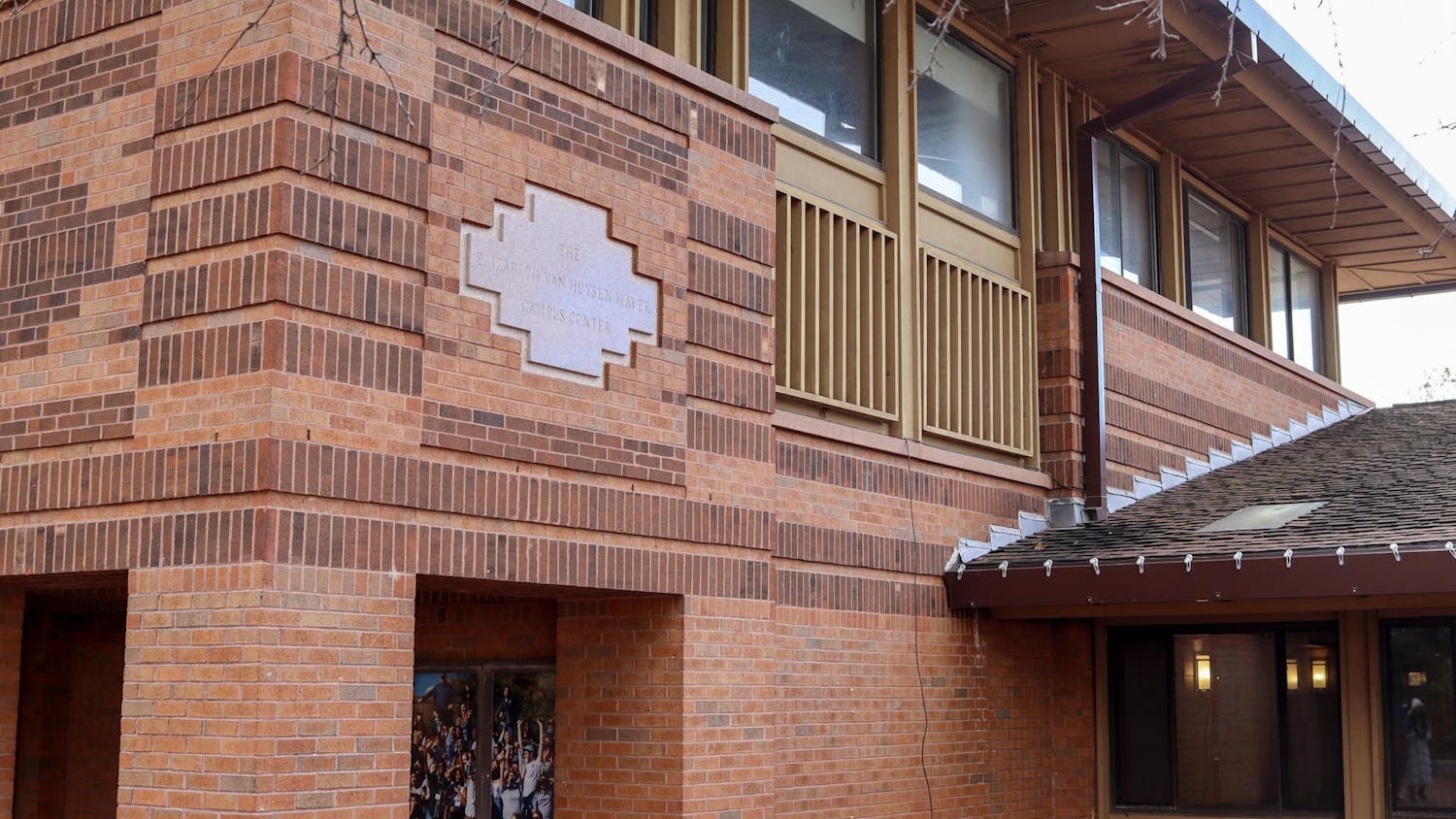As Massachusetts undergoes its most serious drought in decades, Tufts and many of the surrounding areas remain largely unrestricted in terms of water usage.
In its most recent weekly report released last Thursday, the United States Drought Monitor classified 98.03 percent of the state as being under drought conditions. More than a third of the state, including much of Greater Boston, currently suffers from extreme drought, depleting the water reserves of many communities, according to the Drought Monitor.
Many cities and towns in Eastern and Central Massachusetts have implemented emergency water restrictions, according to a map compiled by the Massachusetts Department of Environmental Protection (DEP). In those localities, some municipalities have restricted outdoor water use to once a week or have banned it altogether.
Meanwhile, Medford and Somerville, as well as many other Boston-area communities, are currently free of water-usage regulations, according to the DEP. This disparity is explained by differences in where the municipality receives its water. Many municipalities rely on wells or single-year reservoirs, Ria Convery, Communications Director for the Massachusetts Water Resources Authority (MWRA), explained.
Medford and Somerville are two of the 51 communities which the MWRA hooks up to the Quabbin Reservoir, according to the MWRA website. The Quabbin Reservoir, a colossal, man-made repository holding six years’ worth of water, serves as the water source for 2.3 million people, mainly around Boston. The MWRA sells water from the reservoir at a wholesale price to towns and cities, which then go on to sell the water to individual residents and businesses, Convery said.
As of Oct. 14, the reservoir was at 81.9 percent capacity, according to Convery, who noted that the reservoir’s relatively larger size makes it so different from other water sources that it has a separate drought definition.
"We go to below normal when [the Quabbin Reservoir] hit[s] below 80 percent," Convery said. "We have to get down to 67.5 percent before we get to a drought warning.”
Convery explained that the MWRA would begin implementing mandatory restrictions if the water level dropped significantly, but the reservoir has not reached a low enough level to even trigger a drought warning since the late 1980s, she said.
Neither Somerville nor Medford, which supply water to Tufts, has pressured the university to decrease water usage, Senior Director of Facilities Services Stephen Nasson said.
“We follow the direction of the state and the local municipalities,” Nasson said. “Quabbin has a pretty decent reserve, and they’re just saying 'do your best.'”
Although neither Medford nor Somerville has had to implement restrictions, Tufts takes active steps to reduce its water usage, Nasson explained.
Nasson noted that, in order to be more environmentally-friendly, Facilities Services has installed low-flow shower heads and timed sink faucets across campus, and it has partnered with the Office of Sustainability on several initiatives. According to Nasson, Facilities Services follows the MWRA's recommendation to water lawns early in the morning, which restricts water loss due to evaporation.
However, freedom from water usage restrictions has not allowed Tufts to completely ignore the drought, according to Grounds Support Services Supervisor James Doyle. Because of the low rainfall this year, Facilities Services limited new planting, taking on only a few small projects such as the addition of three memorial trees, he said.
“A lot of planting that I’d like to see done on this campus, I wasn’t going to try to plant even late-summer because we wouldn’t be able to get out and water it the way I’d like to,” Doyle said. “It’s not as easy to make sure you get things watered when you’re getting no help from Mother Nature in that department.”
According to Nasson, Tufts regularly waters several newly planted lawns, such as the ones by Lewis and Metcalf Halls, and several athletic fields. Otherwise, Facilities Services has worked to cut back on watering.
However with the seasons changing, Tufts' water usage will soon decrease significantly, Doyle said. Doyle explained that Tufts has shut off most of its irrigation because rain has increased and the nights have gotten cooler. He plans on shutting off the irrigation completely on Nov 1.
According to Convery, demand for water naturally decreases during the fall.
"If the water demand decreases and we get some rain," she said, "[Municipal water restrictions] will start to ease up a little bit.”
Water conservation goes a long way toward maintaining the high levels of the reservoir, according to Convery. Over the past three decades, Quabbin Reservoir water usage has actually fallen, declining from around 340 million gallons a day in the 1980s to only 200 million gallons a day now, she said.
Last year, the City of Boston used the same amount of water as it had at the turn of the previous century. Convery noted that environmental awareness, increased water prices, fixed leaks and new plumbing codes all played into this rapid decrease.
However, Convery noted that if the drought reoccurs in the upcoming years, even the Quabbin Reservoir’s levels could fall to levels that would call for mandatory restrictions.
“Even though the Quabbin is still in good shape, people should use water wisely," she said.
Tufts left largely untouched by Massachusetts drought






